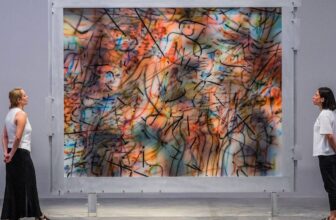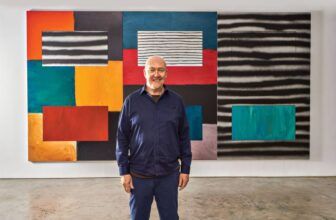What Was Robert Rauschenberg Known For
Robert Rauschenberg is widely celebrated as one of the most pivotal and revolutionary artists of the 20th century. Blurring the lines between painting, sculpture, photography, and performance, Rauschenberg was not simply an artist; he was a fearless experimenter who redefined what art could be. Over his six-decade-long career, he not only transformed American art but also left behind a vast, dynamic body of work that continues to resonate with contemporary audiences and collectors alike.
The Rise of a Visionary
Born Milton Ernest Rauschenberg on October 22, 1925, in Port Arthur, Texas, Rauschenberg came from humble beginnings. He studied at the Kansas City Art Institute and later at the famed Black Mountain College in North Carolina, where he was mentored by notable figures such as Josef Albers and collaborated with avant-garde minds like John Cage and Merce Cunningham. It was during this formative period that Rauschenberg began to question the conventional boundaries of art, eventually becoming a key figure in the transition from Abstract Expressionism to later movements like Pop Art and Conceptual Art.
Rauschenberg’s early life and education helped instill in him a relentless curiosity and desire to defy categorization. This spirit would define his career and the unique trajectory of his art.
What Was Robert Rauschenberg Known For?
Rauschenberg is best known for his “Combines”, a term he coined to describe hybrid works that combine traditional painting with non-traditional materials such as found objects, photographs, fabrics, newspaper clippings, and everyday detritus. Created during the 1950s and 1960s, the Combines were revolutionary in their rejection of the strict separations between painting and sculpture. Works like Monogram (1955–59), which includes a taxidermied goat encircled by a tire mounted on a painted canvas, exemplify his radical approach.
He was also known for his silkscreen paintings, produced in the 1960s, which incorporated mass media imagery, from political figures to advertising, and challenged the uniqueness of art in the age of mechanical reproduction. In this way, Rauschenberg helped pave the way for artists like Andy Warhol, though he remained more focused on spontaneity and personal engagement than Warhol’s detached coolness.
Additionally, Rauschenberg made significant contributions to performance art, printmaking, and photography, constantly exploring the intersections between different disciplines.
How Famous Is Robert Rauschenberg?
Robert Rauschenberg is internationally recognized as contemporary artist. His impact on 20th-century art history is profound, often placing him alongside figures like Jackson Pollock, Andy Warhol, and Jasper Johns. In 1993, Rauschenberg received the National Medal of Arts from President Bill Clinton, a testament to his cultural importance.
His works are held in the permanent collections of nearly every major art institution in the world, including the Museum of Modern Art (MoMA) in New York, the Tate Modern in London, the Centre Pompidou in Paris, and the Guggenheim Museum. He has been the subject of numerous retrospectives and exhibitions, including a landmark retrospective at MoMA in 2017–2018 titled Robert Rauschenberg: Among Friends.
His fame also stems from his pioneering collaborations. He worked with dancers, composers, engineers, and writers, expanding the scope of what art could be and who could participate in its creation. His work with the Merce Cunningham Dance Company, for instance, introduced a fluid dialogue between movement and visual form that influenced both disciplines.
How Does Robert Rauschenberg Make His Artwork?
Rauschenberg’s creative process was highly experimental and intuitive. He once said, “Painting relates to both art and life. Neither can be made. (I try to act in the gap between the two.)” This philosophy guided his artistic methods, which emphasized process, spontaneity, and the use of unexpected materials.
His Combines were often created by layering materials directly onto canvas or wood panels, adding paint, and integrating found objects he collected from the streets of New York. These materials could include furniture, tires, textiles, mirrors, taxidermy animals, and even personal items.
In his silkscreen phase, Rauschenberg appropriated imagery from newspapers and magazines, then layered them onto his canvases with a mechanical printing technique. Despite using commercial methods, he maintained a painterly sensibility, frequently adding brushstrokes or collage elements by hand. This fusion of machine and human touch was groundbreaking and questioned the notions of authorship and originality in art.
Later in his career, Rauschenberg explored digital technologies and worked with institutions like Bell Labs to incorporate electronics into his pieces. The Rauschenberg Overseas Culture Interchange (ROCI), a global traveling project he initiated in the 1980s, highlighted his interest in social engagement and cross-cultural dialogue, as he created new artworks in collaboration with local artists in countries like China, Cuba, and Chile.
What Art Style Is Robert Rauschenberg Associated With?
Rauschenberg is most closely associated with Neo-Dada, Pop Art, and Conceptual Art, though his practice consistently defied any single categorization. He emerged during the height of Abstract Expressionism but quickly distanced himself from its focus on personal angst and gestural abstraction.
In many ways, Rauschenberg was a proto-Pop artist, incorporating commercial imagery and mundane objects into his work before Pop Art became a formal movement. Unlike Andy Warhol, who leaned into repetition and mass culture’s emptiness, Rauschenberg retained a sense of emotional immediacy and physical presence in his work.
His Combines echo the Dada tradition of readymades, most notably those by Marcel Duchamp, while also incorporating the expressive and formal innovations of modernism. His work helped dismantle the “high vs. low” art hierarchy, proving that the debris of everyday life could be as aesthetically compelling and meaningful as traditional oil painting.
What Materials Does Robert Rauschenberg Use?
Rauschenberg’s materials were as eclectic as his influences. He famously embraced the mundane and the discarded, believing that art should not be limited to oil paint and canvas. Some of the materials he used throughout his career include:
Paint and oil
Found objects (tires, furniture, cardboard, signs)
Newspapers and magazines
Photographic imagery
Silkscreen ink
Fabric and textiles
Metal, wood, glass
Digital media and electronics (in his later years)
Taxidermy animals
This diverse material vocabulary allowed him to create works that felt deeply connected to the real world, physical yet conceptual, chaotic yet composed. His use of non-traditional materials was not only aesthetic but also philosophical, a challenge to elitist art traditions and a democratization of visual expression.
How Many Artworks Does Robert Rauschenberg Have?
Robert Rauschenberg was incredibly prolific. Though it is difficult to determine an exact number, estimates suggest he created thousands of artworks over the course of his career. This includes not only his Combines and paintings but also:
Photographs
Drawings
Sculptures
Prints and lithographs
Set designs for dance and theater
Installations and public artworks
The Robert Rauschenberg Foundation, established in 1990, preserves his legacy and houses an extensive archive of his work. The foundation continues to research and catalog his vast output while supporting contemporary artists and art initiatives around the world.
How Much Does Robert Rauschenberg Art Cost?
Rauschenberg’s work is highly sought after in the art market, with prices ranging dramatically depending on the medium, period, and provenance of the piece. Smaller works on paper or lithographs can be acquired for $10,000 to $50,000, while major paintings and Combines command millions of dollars at auction.
Some of the most notable auction results include:
“Buffalo II” (1964) – Sold for $88.8 million at Christie’s in 2019, setting a record for Rauschenberg’s work and cementing his place in the highest echelons of the art market.
“Untitled (1963)” – Sold for $20.6 million at Sotheby’s in 2015.
“Overdrive” (1963) – Achieved over $10 million at auction.
Rauschenberg’s prices reflect both the historical importance of his work and the enduring appeal of his aesthetic. As a result, collectors, museums, and investors continue to vie for the opportunity to own a piece of his legacy.
Robert Rauschenberg passed away on May 12, 2008, at the age of 82, but his influence continues to ripple through the art world. He redefined what art could be, both in terms of materials and meaning, and inspired generations of artists to think more expansively.
His legacy can be seen in the works of:
Jasper Johns, his early collaborator and partner
Andy Warhol, who adopted silkscreen methods Rauschenberg helped popularize
David Hammons, who uses found objects and street culture
Tracey Emin, Damien Hirst, and countless others who blend personal narrative, conceptual art, and unconventional materials
Moreover, the Robert Rauschenberg Foundation continues to expand his impact by supporting artists and initiatives that reflect his commitment to innovation, inclusivity, and global dialogue.
A Life Between Art and Life
Robert Rauschenberg’s career was a continuous interrogation of the boundaries between art and life. His willingness to experiment, collaborate, and disrupt established norms made him not only a creative force but also a cultural icon. From his earliest black paintings to his sprawling global projects, he remained committed to a vision of art that was open, inclusive, and alive with possibility.
Today, Rauschenberg’s work remains as relevant as ever, challenging, surprising, and deeply human. He taught us that art is not confined to a studio or gallery wall, but exists everywhere, in every object, every moment, and every act of seeing. And in that sense, his greatest artwork may well be the imaginative freedom he gave to us all.




